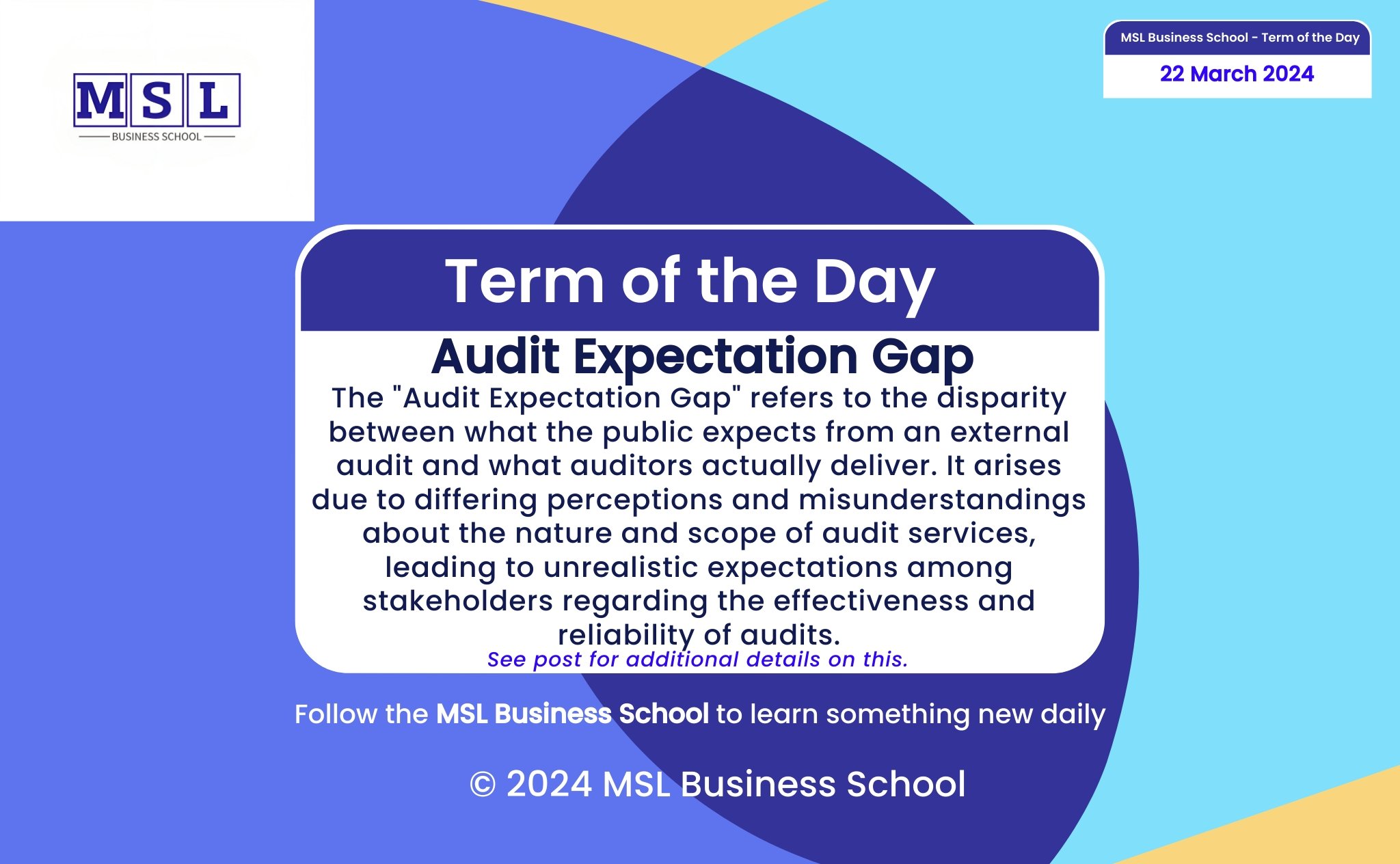Audit Expectation Gap
Term of the Day - 22 March 2024
Today’s Term is “Audit Expectation Gap”.
The "Audit Expectation Gap" refers to the disparity between what the public expects from an external audit and what auditors actually deliver. It arises due to differing perceptions and misunderstandings about the nature and scope of audit services, leading to unrealistic expectations among stakeholders regarding the effectiveness and reliability of audits.
Key aspects of the audit expectation gap include:
Perception of Audit Assurance: The public often expects auditors to provide absolute assurance regarding the accuracy and completeness of financial statements, which may not align with the limited assurance provided by audit procedures.
Role of Auditors: While auditors perform important procedures to assess the reasonableness of financial statements, they do not provide absolute guarantees or detect all instances of fraud or error. However, the public may mistakenly believe that auditors are responsible for detecting all irregularities.
Complexity of Financial Reporting: The complexity of financial reporting standards and transactions can contribute to misunderstandings about the scope and limitations of audit procedures, further widening the expectation gap.
Communication and Education: Bridging the audit expectation gap requires improved communication and education efforts by auditors, regulators, and other stakeholders to manage expectations and enhance understanding of the audit process.
Addressing the audit expectation gap is essential for maintaining trust and confidence in financial reporting and audit services, highlighting the need for clear communication, transparency, and ongoing dialogue between auditors and stakeholders.


